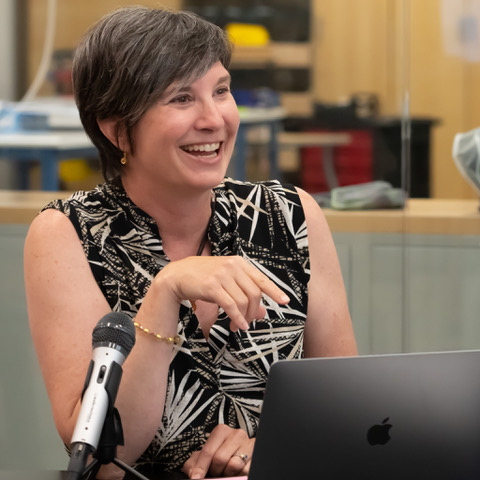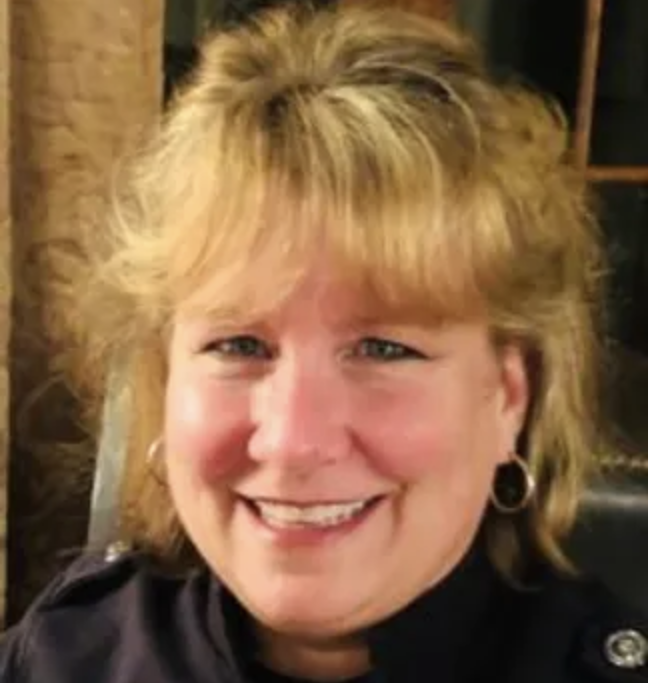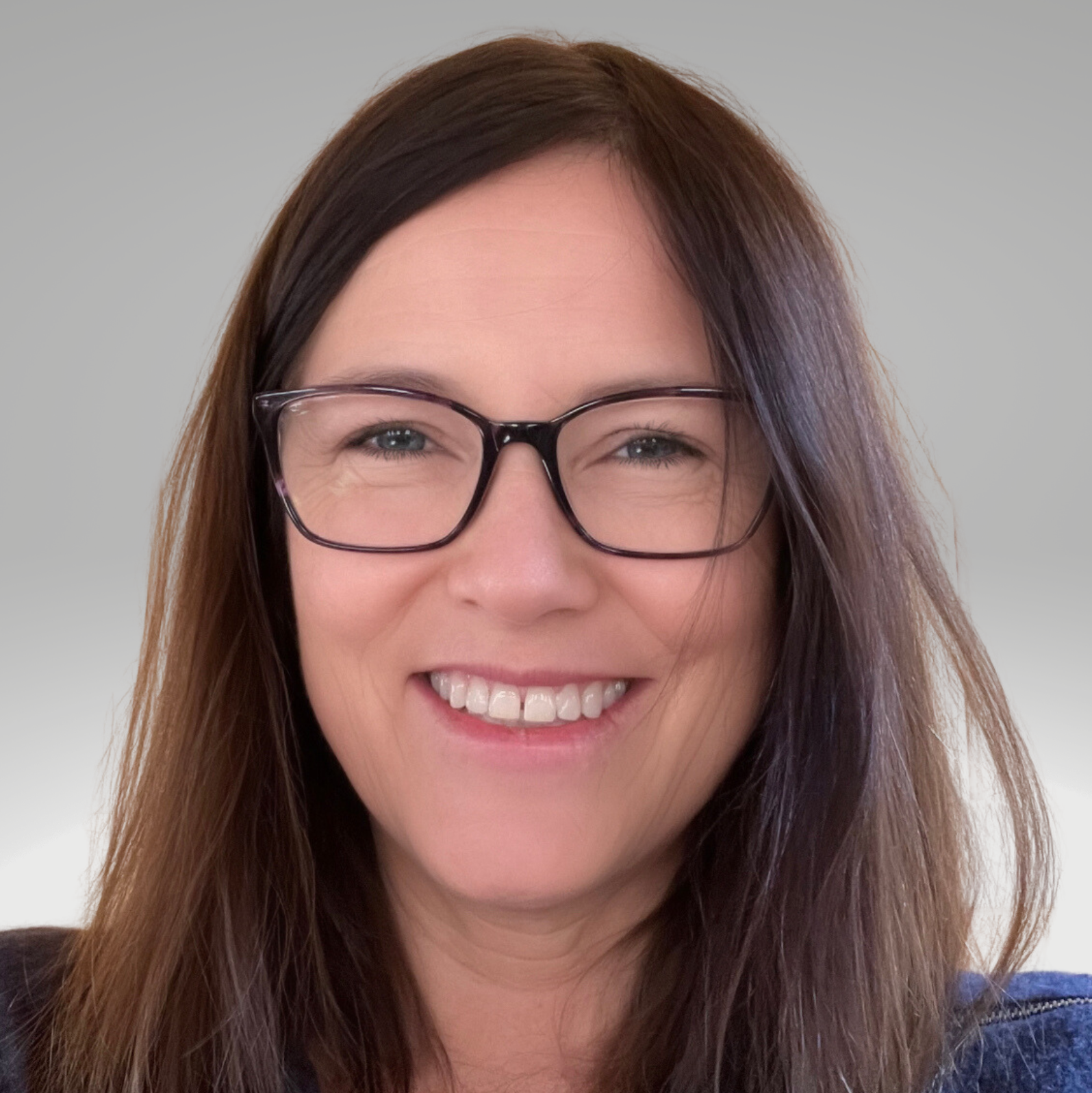Just imagine if you visited 20 companies in your senior year of high school—you’d have a much better idea of the kinds of jobs available in the world and in your own town.
Catherine Fraise, Founder and president, 100 Roads
The elements of a learner-centered ecosystem are emerging in Columbus, Ohio. For the last 20 years, the PAST Foundation has been offering learners access to hands-on learning opportunities as global businesses planted roots in the region. With educational needs changing, PAST saw an opportunity to integrate home bases within its network of learning hubs and field sites, creating a learner-centered ecosystem. In partnership with 100 Roads—a learner-centered and virtual learning visionary—the PAST Foundation is connecting the needs of learners, businesses, and the community. We sat down with Annalies Corbin, president and CEO of the PAST Foundation, Marcy Raymond, strategy officer at the PAST Foundation, and Catherine Fraise, founder and president of 100 Roads, to talk about this exciting expansion of their work and what led to this being the right time to try something new in Columbus.
Q: Could you share a little bit about the PAST Foundation and your current work to pilot a learner-centered ecosystem?
Annalies: Our organization is anthropologically based, centered on recognizing that human potential and human culture are key values in our space. For the last decade, we’ve been looking at educational research and development and figuring out where we can help communities, schools, parents, and other organizations. We wanted to understand how to link learning to real life. That’s absolutely foundational to us. And that gave us the opportunity to deeply partner with other entities and organizations to try something new. We found ourselves with the opportunity to literally create what we think teaching and learning could look like.
This pilot will weave together learning hubs and field sites throughout the city with new home bases, which will serve as a central place for learners to connect with peers and learning advisors. By creating a cohesive group of resources, we hope to provide young people with an environment where they can explore their interests, connect with others, and build skills needed for life and career. We know we have to meet people where they are if we are to create a reimagined educational experience. At the same time, we also recognize that there’s a whole set of people, systems, and opportunities that will allow for this transformation to take place.
Marcy: When reimagining education, we must consider the barriers hindering true learning and growth. We cannot follow a one-size-fits-all factory model. Instead, we need to focus on building strong relationships, reducing barriers, and empowering students to have confidence in themselves. It’s about shifting our perspective from traditional subjects to the holistic development of individuals within their communities and industries.
Cath: My focus is on integrating virtual experiences to enable more equity within this work. Kids need an easy way to explore different industries. We have a lot of kids out there that want real-world experience. Transportation is one big barrier to that. Virtual spaces allow for different industries to interface with students and we can add a whole new range of options for them. In creating both highly interactive virtual experiences with real-world learning opportunities, we’re bridging a gap to different industries with new tools that we now have available to us. It creates a much more fluid exploratory landscape for all learners.
Q: Could you please tell us a little bit about what this ecosystem will look like for a learner?
Cath: We have a physical space downtown that functions as an innovation hub. There are eight classrooms as well as a big meeting area in the middle. We also have virtual spaces, one that mirrors our physical hub, as well as entirely new areas where kids can connect with each other and other learning opportunities, such as a robotics lab. Learners can explore these spaces and collaborate together and with experts from our partner organizations.
Marcy: We have about 20 very strong industry connections to help learners gain real-world learning experiences through field sites, as Columbus benefits from a lot of investment in 5G infrastructure. Learners can partner with a team from AT&T to help them understand the world of telecommunications, what 5G means, what types of jobs are available in the field, and what a pathway into that career looks like. For example, a third-grade learner might meet with someone who installs fiber optics to learn how they work. If they can meet in person, they will, but they have the opportunity to explore virtually if time or transportation is limited. We have a lot of opportunities for learners through partnerships with other companies as well, like Bath & Body Works and Honda.
Home bases, the newest component of this program, will serve as a central hub for learners to connect with their peers and learning advisors. Together, we aim to connect all of these resources into a learner-centered ecosystem.
There was a real willingness and readiness from our partners who feel a sense of urgency to do something different around education. We’re thinking about career and workforce readiness in a different way, and that’s resonating with people.
Annalies Corbin, President and CEO, PAST Foundation
Q: What are some of the conditions that enabled you to develop the pilot so quickly?
Annalies: There was a real willingness and readiness from our partners who feel a sense of urgency to do something different around education. We’re thinking about career and workforce readiness in a different way, and that’s resonating with people across the board. And companies are eager to invest in our young people. The state of Ohio also feels the same sense of urgency and is seeking to rapidly advance industries like manufacturing, broadband, and IT. With all this opportunity, we have the ability now to shake things up.
Cath: There were also a lot of things already in place that helped us to pivot. There’s a physical learning space, existing business connections, and families who were involved in our programs. Those things were built over time, and in some ways, this new work feels like a natural evolution of the brilliant work that the PAST Foundation has been doing.
Q: You have a lot of different stakeholders in this work. What is the value and possibility they see in this—from economic development to career pathways?
Marcy: Ohio, particularly central Ohio, is at a tipping point where we really need workforce readiness. It needs to happen rapidly; we can’t afford to wait. Recognizing that tipping point has caused the urgency. And when the urgency is known, we can look at creative ways to solve problems.
Families are looking for ways to make sure that their children are prepared for the world and jobs of tomorrow. Similarly, companies want to make sure future employees are prepared to take on evolving jobs, and they’re willing to invest in that. Both families and businesses alike see the alignment between our vision and what young people need for a thriving future. We know how to speak to these different interests and have a solution that aligns with them. People are ready to reimagine and invest in new opportunities, so it’s a wonderful time to be in Ohio.
Annalies: One of the biggest shifts we’re seeing in this is the desire to build these skills prior to post-secondary education. Young learners can experience different things from product engineering to visual design to supply chain management. There are countless opportunities for learning and skill-building that can be adapted for different grade levels.
Cath: Simultaneously, the home base elements give kids time to reflect on their exploration and really work out what resonates with them. Kids are seeing the value in this type of learning personally and in terms of future careers, and our supporters see a huge value in that as well.
With that exposure, these kids will be able to make better decisions about how they take their next steps in life and what industries are of interest to them. Just imagine if you visited 20 companies in your senior year of high school—you’d have a much better idea of the kinds of jobs available in the world and in your own town. And then, think about expanding that opportunity to all grade levels.
We cannot follow a one-size-fits-all factory model. Instead, we need to focus on building strong relationships, reducing barriers, and empowering students to have confidence in themselves.
Marcy Raymond, Strategy Officer, PAST Foundation
Q: What’s next for the pilot and what are some important milestones that you’re looking at in the next few months?
Marcy: Developing home bases where learners can meet, connect, and reflect on their learning is a big next step for us. We’re going to see what’s needed to make them a success and how they evolve. We want to document what we do, see the reactions of kids, and observe how it impacts their identity and growth. We also want to be mindful of documenting what attributes are crucial for advisors and mentors. We want to ensure that any expansion is being done with the fidelity of what works for kids.
Cath: As we develop and expand home bases, we’re also mapping out what the role of a learning advisor looks like, as well as the pathway to becoming a learning advisor. We want to make sure that kids have an amazing learning journey, but also the social and emotional support they need as well. Advisors are of course key to that.
We’ll address questions like: How can we help kids really understand who they are, and what resonates with them? Are they confident in making decisions about their opportunities? Do we have all of the tools these kids need?
Annalies: We see this as a growing cycle of development, connection, and assessment. We have existing partners, businesses, and learners who are eager about this work. The home bases will help to connect this into a full-time opportunity for young people and allow us to reach new learners as well. As we grow, we’ll assess if and how each part is working. With any new creation, some refinement is necessary. But I’m confident we have the tools, insight, partners, and team ready to take on this task and bring a reimagined way of learning and living to the young people of Columbus.



